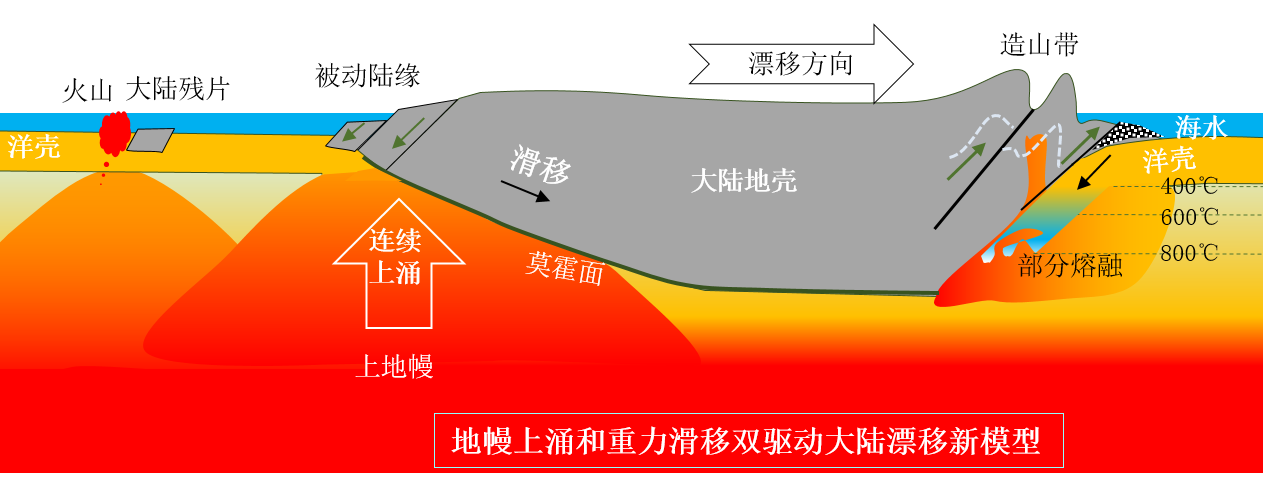
Recently, Dr. Liang Guanghe from Institute of Geology and Geophysics, Chinese Academy of Sciences, has made significant progress in their research on the driving forces of continental drift. The findings will be published on the journal Earth Science Frontiers, titled "Decipher the driving force in continental drift from new insights about the South Atlantic breakup process".
Ever since Wegener proposed the hypothesis of continental drift one hundred years ago, the dynamic mechanism that drives the continent movement has been one of the most important questions in earth sciences. It is a fact that continent can drift or move, but what drives the continent drift or move is a matter of debate. Traditionally, there are two kinds of dynamic models. One is the seafloor spreading "push force" model, which holds that the oceanic plate constantly forming at the mid-ocean ridge pushes the continental plate, but it cannot reasonably explain the widespread distribution of continental debris on the ocean. The other is the oceanic plate subduction drag "pull force" model, which holds that the oceanic plate subducted in front of the continental plate generates downward pulling force due to density increase, the subduction plate pulls the continental plate move forward, but it is difficult to explain the plate movement on both sides of the Atlantic, because there is no subduction plate pull force.
For this reason, Dr. Liang Guanghe took the South Atlantic Ocean, the birthplace of the continental drift hypothesis, as an example. By interpreting two deep reflection seismic exploration profiles across the South Atlantic, they quantitatively calculated the magnitude of the driving force and proposed a new continent drift model driven by mantle upwelling and gravity slip. They believes that continental plates can drift by themselves rely on thermal energy. The driving force originated from the mantle upwelling in the initial stage of continental cracking, which created a slope on the Moho at the rear of the continental plate. The continental plate slide down the slope relying on its own gravity and move, and the moving continental plate cause a pressure drop behind it. Pressure drop induce the mantle melting and upwelling again, the upwelling mantle produce a new slope again, and the continent slide down again. This is a chain of mantle upwelling and gravity slip process.
A very important reason why the continental plate can overcome the huge resistance to slide forward is that the continental plate thrusts on the oceanic plate, and many water bearing minerals enter the subduction zone. The melting temperature of continental crust or oceanic crust will drops by hundreds of degrees Celsius under the condition of water, so partial melting occurs in the subduction zone to form a weak zone. Continental drift is similar to the process of continental plates continuously sinking into soft mud. This model is a new exploration beyond plate tectonics. It may have great impact on the development of earth science.
